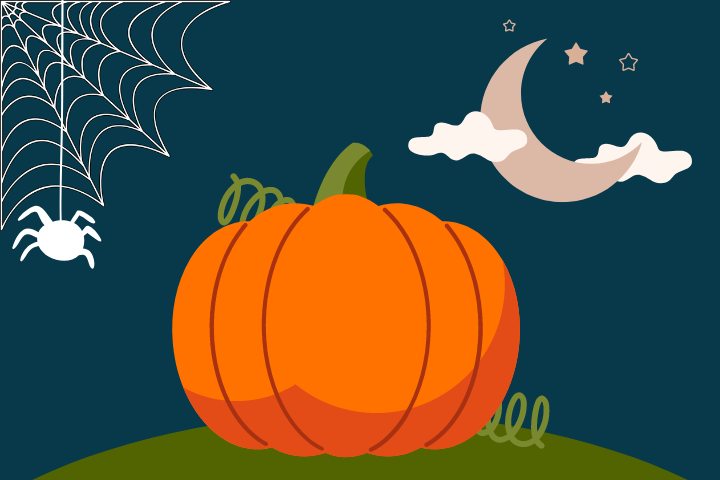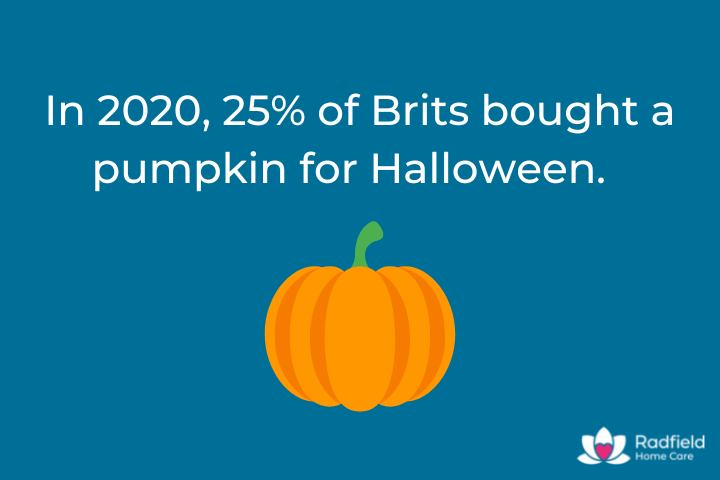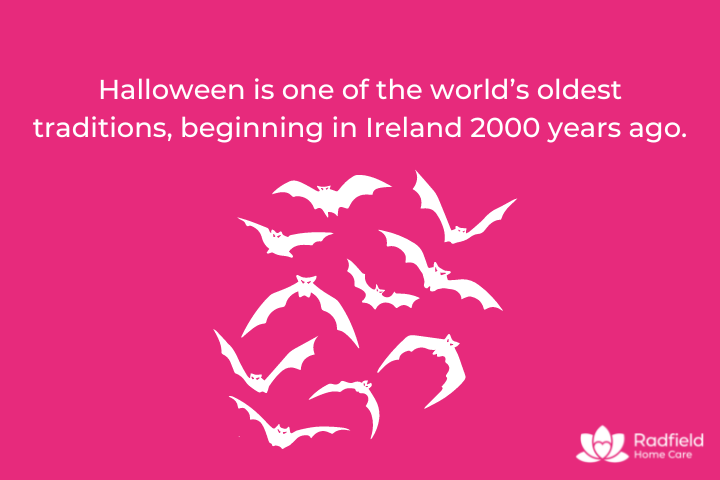
National Office
Please enter the office location/term above to receive results for your closest office as well as information matches
Halloween is right around the corner, with some homeowners busily building their spooky domains and children picking outfits from the abyss to get their hands on all kinds of sweet things. Witches, ghosts, zombies and ghouls all coming together to try and gather as many sweets as monsterly possible. Halloween at its heart is meant to be a bit of fun, but for some members of the community, it can be a genuinely frightening experience.
Alzheimer’s disease and other illnesses that cause cognitive decline can create a blurred sense of reality, making it difficult to distinguish between what is real and what isn’t. As you can imagine, this can turn an innocent Halloween costume into something that inspires true fear.
Alzheimer’s is a complicated illness and taking the time to understand how it affects people may come in handy while you’re trick-or-treating. Alzheimer’s and dementia can cause a change of temperament in the person living with the disease. Outbursts of anger are attributed to parts of the brain that regulate inhibitions and these are affected by the disease. A person with dementia is not confrontationally aggressive, but rather because of a loss of inhibition, anger is their reaction to any distress or confusion they may feel.
Dr Hannah MacKechnie tells us:
“People living with advanced Alzheimer’s can also have a different sense of reality as their memory becomes affected by the disease. A costume or mask can trigger confusion and distress as they lack the ability to differentiate between fantasy and reality.
A calm environment and routine are important when caring for a person with dementia. Unexpected knocks on the door at night, people in costumes and loud noises can all be disruptive and cause agitation and anxiety.”

Sometimes the best way to illustrate a point is with a story. What you’re about to read is a true story from a few years ago, it focuses on Tom, one of our clients experiencing Alzheimer’s disease.
“Tom is living with Alzheimer’s disease and his wife Carol has cared for him at home but last year, as his cognitive function declined, she began to struggle. This was exaggerated at Halloween when trick-or-treaters came to the house.
Tom had been restless that day and became angry when Carol had tried to stop him from leaving the house. She hoped that a quiet evening and watching TV would settle him down. At about 7 pm, a knock at the door startled Tom and he insisted on answering the door. Carol tried to stop him but he became more agitated and was clearly disrupted by an unexpected visitor at night as this was out of the ordinary.
They both answered the door to find three young teenagers wearing ghost masks and black cloaks from the horror film ‘Scream’. At first, Tom recoiled and then began to shout at the teenagers – clearly distressed by their appearance. Carol found his behaviour alarming as he shouted and aggressively waved his arms at the children who ran away from the house. Tom then began to cower at the foot of the stairs crying and shaking.
Carol called her daughter and son in law, David, who quickly came to the house and helped her to get Tom into the living room to calm him down. Another knock at the door caused Tom to become agitated again and fortunately, David was able to persuade Tom to sit down whilst Carol went to the door to ask the visitors to leave.
That evening, David stood outside the front gate of the house asking trick or treaters to please avoid the house. Carol and her daughter sat with Tom and tried to distract him by looking at old family photographs. Tom seemed to go into decline after that evening and it was a few days before he settled down again.”
Tom’s story isn’t uncommon and due to the rise in Halloween’s popularity, older people experiencing Alzheimer’s are unfortunately increasingly exposed to this sort of trauma. Contrary to what you might be thinking, we aren’t trying to discourage anyone from partaking in Halloween festivities, it’s more about raising awareness and keeping vulnerable people in mind while you have fun.
By making some simple decisions, you can make a real difference to someone’s well-being. It only takes one person to start a movement and with your help, we can all begin to see real change in the community at Halloween. We would encourage you to tell the story of Tom to friends, family and children.
Here are some simple tips that you can follow to help keep vulnerable people safe.

If you or someone you know doesn’t want to take part in Halloween this year, don’t put a pumpkin in your window, outside or anywhere else that’s visible.
It’s become commonplace for a lot of communities across the UK to only trick-or-treat at doors with a visible pumpkin on their property. We would advise taking this approach and assuming that any house without a pumpkin is for some reason or another, not partaking in Halloween.
As this is still a relatively new approach to opting-out of Halloween, you might still get some knocks. However, taking the no-pumpkin approach should make a big difference to the amount of people that come to your door.
It would be wrong of us to assume that all older people are opposed to Halloween celebrations, some people still like to be involved and so here are some tips to help them take part safely.
Dr Hannah MacKechnie goes on to say:
“Halloween can prove to be a scary time for people living with dementia or physical limitations. Having strangers at the door and the fear of tricks being carried out can be very stressful.
The home should be a place of security and safety and the potential fear caused by trick or treating could create negative associations of being alone at home. This may then result in negative behaviour, withdrawing more from society, losing confidence and then being at a greater risk of falls and other age-related issues.
For older clients with dementia, Halloween costumes and the different noises of young people roaming the streets may cause an increase in disorientation and fear as they struggle to understand the altered world around them, and won’t necessarily have the cognitive ability to understand that it is time-limited.
It is so important as communities that we support and protect our older residents and being thoughtful and considerate at this time can make a significant difference to an individual’s sense of well-being and safety.”
If you’d like a fully trained, expert Care Professional to keep your loved one, or someone you know company this Halloween, head to our find care page where you can find contact details for your local office.
Get in touch with your local Radfield Home Care office today and find out more about the support we offer and the difference we can make.